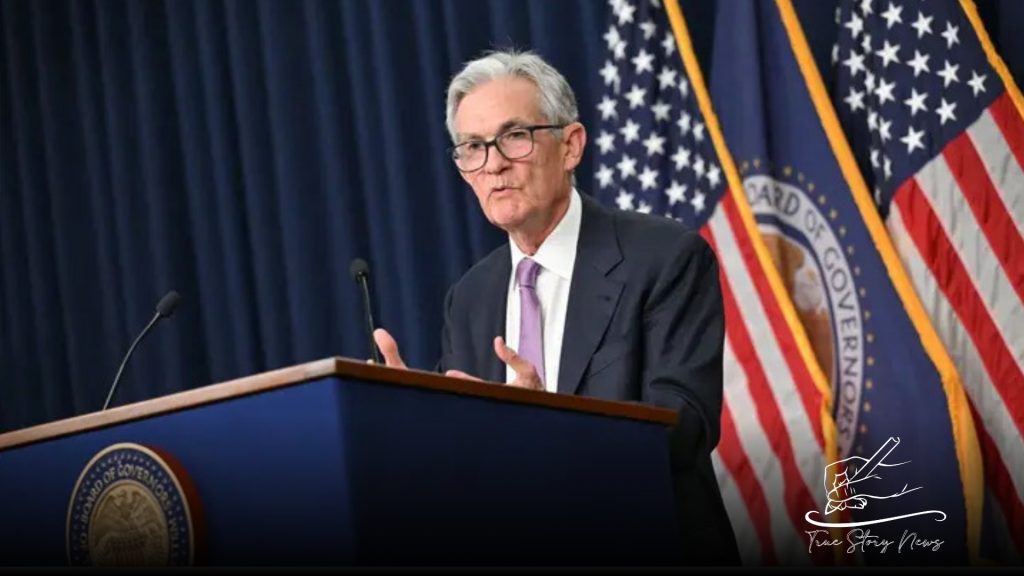The US central bank has significantly reduced interest rates for the first time in over four years, implementing a cut that exceeds typical adjustments.
The Federal Reserve has lowered its target for the key lending rate by 0.5 percentage points, bringing it to a range of 4.75% to 5%.
Jerome Powell, the chair of the Federal Reserve, characterized the decision as “strong,” emphasizing its necessity amid easing price increases and rising concerns regarding the job market.
US borrowers are set to experience relief as they navigate the highest interest rates seen in over twenty years.
On Wednesday, the cut exceeded the expectations of numerous analysts who had made predictions just a week prior. Additionally, the bank’s forecast indicated the possibility of a further rate decline of half a percentage point by the year’s end.
Jerome Powell, the chair of the Federal Reserve, stated that the decisive measures taken on Wednesday aimed to ensure that elevated borrowing costs, implemented to combat inflation, would not adversely affect the US economy.
Mr Powell stated, “The labour market is robust, and we aim to maintain that strength.” “This is the course of action we are taking.”
The Federal Reserve’s decision follows similar actions taken by central banks across Europe, the United Kingdom, and Canada. Many analysts had anticipated a reduction.
In the lead-up to the meeting, a notable uncertainty loomed regarding the extent of the cuts officials would ultimately endorse.
“Even in the absence of major economic challenges, policymakers have taken proactive measures,” stated Isaac Stell, investment manager at Wealth Club, a UK investment service.
“Questions abound regarding the Federal Reserve’s motivations behind this significant decision.”
In a decisive move, the Federal Reserve implemented significant interest rate hikes beginning in 2022 to temper economic growth and curb inflation, which had reached levels not seen since the 1980s.
The actions, which affected the public through increased costs for mortgages, car loans, and various forms of debt, aimed to alleviate price pressures by curbing consumer spending.
As inflation, defined as the rate at which prices increase, has begun to ease, officials are increasingly worried about the potential risks that elevated rates pose to the broader economy.
The unemployment rate in the United States has risen to 4.2%, up from 3.7% at the beginning of the year, indicating a slowdown in hiring activities.
Recent projections following the meeting indicate that officials anticipate a more rapid decline in inflation and a more significant increase in unemployment compared to their June assessments. The unemployment rate is expected to reach 4.4% by the end of 2024.
Mr. Powell acknowledged that the job market had been excessively robust last year and expressed approval of the recent cooling trends. However, he refuted claims that the Federal Reserve was concerned about the onset of a significant economic slowdown.
“Currently, there are no indicators in the economy that point to an increased likelihood of a downturn,” he stated.
According to the latest figures released by the Commerce Department, the US economy experienced an annual growth rate of 3% over the three months ending in June. Retail spending continues to show resilience.
In August, inflation decreased to 2.5%, inching closer to the Federal Reserve’s 2% target for the fifth consecutive month.
In a notable departure from consensus, Fed governor Michelle Bowman cast a dissenting vote, marking the first such opposition since 2005.
In the past, the bank has implemented interest rate cuts of 0.5 percentage points during critical moments, including the onset of the coronavirus pandemic and the 2008 financial crisis.
Economist Randall Kroszner, a professor at the University of Chicago’s Booth School of Business and a former governor of the Federal Reserve, stated that Wednesday’s announcement is important not because of the magnitude of the cut but because it heralds the beginning of a new phase characterized by reduced borrowing costs.
“A change of one-quarter of a percentage point in either direction is unlikely to destabilize the US economy,” he stated.
“The focus is on their trajectory for the remainder of the year, as well as their plans for the intermediate and long term.”
The Federal Reserve has maintained its key interest rate, the rate at which it lends to banks, unchanged since July 2023.
Recent forecasts from the Federal Reserve indicate that officials anticipate a decline in the key lending rate. They project it to reach approximately 4.4% by year-end and further decrease to 3.4% by the end of 2025. This figure stands in stark contrast to predictions made as recently as June.
‘It’s a major deal’
Jennifer Heasley, proprietor of Sweet Mama’s Mambo Sauce in Pennsylvania, expressed her anticipation for action from the Federal Reserve. This comes after she relied on credit cards to finance the expansion of her business, which specializes in barbecue-style sauce, two years prior.
“My interest rates have risen, resulting in a significant increase in my monthly payments,” she remarked, highlighting that one credit card now imposes a 21% charge.
“Purchasing equipment for $1,500 on a credit card can lead to significant interest charges if the balance is not paid off,” she stated.
“It is significant for them to begin to come down.”
Following the initial announcement, the Dow Jones Industrial Average, the S&P 500, and the Nasdaq experienced a surge, only to close the day with modest declines.













